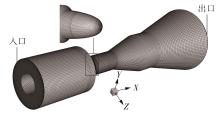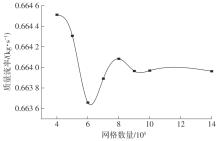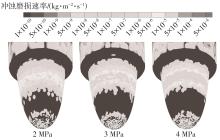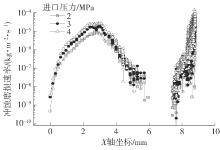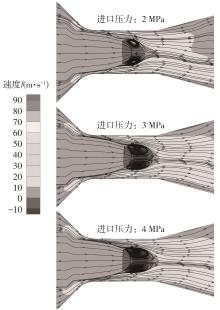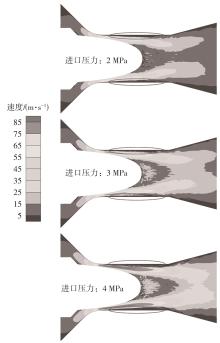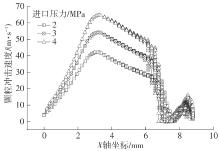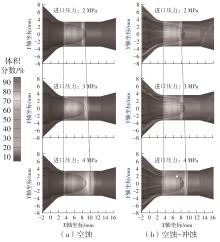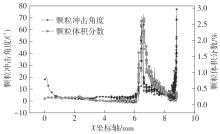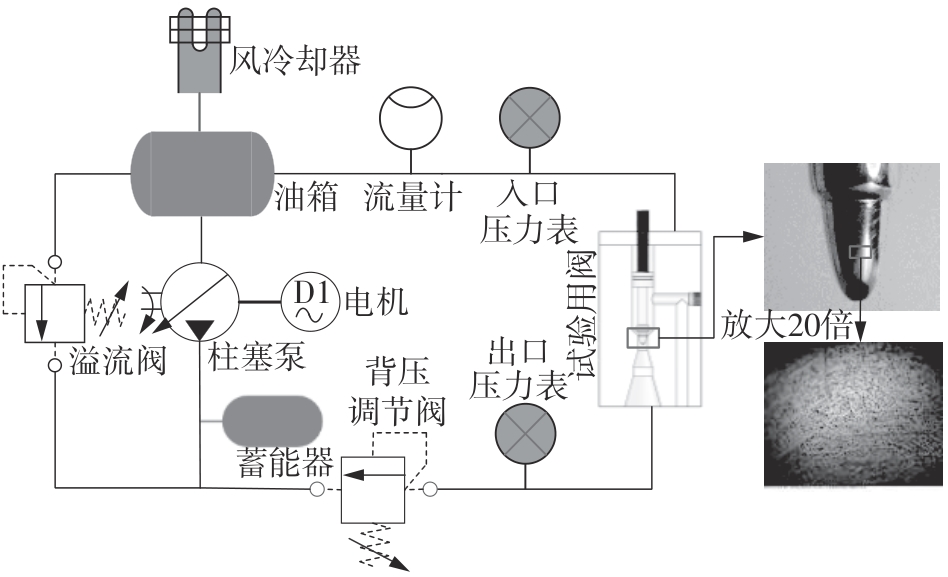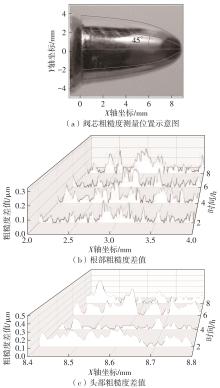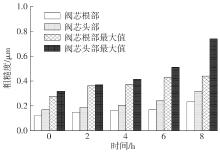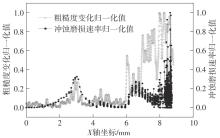| 1 |
康红普,王国法,王双明,等 .煤炭行业高质量发展研究[J].中国工程科学,2021,23(5):130-138.
|
|
KANG Hongpu, WANG Guofa, WANG Shuangming,et al .High-quality development of China’s coal industry[J].Chinese Engineering Science,2021,23(5):130-138.
|
| 2 |
LIU X, HE J, XIE Y,et al .Investigation on unsteady cavitation flow and excited pressure fluctuations in regulating valve[J].Machines,2022,10(1):32-32.
|
| 3 |
WEI M, JI H, YANG L .Axial vibration in a poppet valve based on fluid-structure interaction[J].Proceedings of the Institution of Mechanical Engineers,Part C:Journal of Mechanical Engineering Science,2015,229(17):3266-3273.
|
| 4 |
HABIBNEJAD D, AKBARZADEH P, SALAVATIPOUR A,et al .Cavitation reduction in the globe valve using oblique perforated cages:a numerical investigation[J].Flow Measurement and Instrumentation,2022,83:102-110.
|
| 5 |
OU G,OU Y, ZHRNG Z,et al .Investigation on failure process and structural improvement of a high-pressure coal water slurry valve[J].Engineering Failure Analysis,2019,96:1-17.
|
| 6 |
王世强 .基于重叠网格的阀芯振荡诱导空化的研究[D].兰州:兰州理工大学,2023.
|
| 7 |
QIU N, XUN D, ZHU H,et al .Impact of re-entrant jet and shedding cloud cavity on the distribution of cavitation erosion[J].Ocean Engineering,2024,307:118111/1-19.
|
| 8 |
孙毅,祝利豪,毛亚郎,等 .近球壁射流空泡溃灭对微细颗粒破碎效果的影响[J].中国机械工程,2020,31(24):2910-2917,2923.
|
|
SUN Yi, ZHU Lihao, MAO Yalang,et al .Effects of bubble collapse of near-ball wall jet flows on crushing effectiveness of fine particles[J].China Mechanical Engineering,2020,31(24):2910-2917,2923.
|
| 9 |
IJIRI M,OGI T, YOSHIMURA T,et al .Effect of multifunction cavitation on microstructure and plane bending fatigue properties of low-alloy steel[J].Results in Materials,2024,22:100578/1-8.
|
| 10 |
AMARENDRA H J, CHAUDHAIR G P, NATH S K .Synergy of cavitation and slurry erosion in the slurry pot tester[J].Wear,2012,290/291:25-31.
|
| 11 |
JIN H, ZHENG F, LI S,et al .The role of sand particles on the rapid destruction of the cavitation zone of hydraulic-turbines[J].Wear,1986,112(2):199-205.
|
| 12 |
张逸群,武晓亚,李根生,等 .天然气水合物旋转空化射流冲蚀性能研究[J].中南大学学报(自然科学版),2022,53(3):909-923.
|
|
ZHANG Yiqun, WU Xiaoya, LI Gensheng,et al .Study on swirling cavitating jet for natural gas hydrate[J].Journal of Central South University (Natural Science Edition),2022,53(3):909-923.
|
| 13 |
陈海舰,刘峰斌,郭诒大,等 .微颗粒对超声空蚀影响的试验研究[J].摩擦学学报,2022,42(3):461-469.
|
|
CHEN Haijian, LIU Fengbin, GUO Yida,et al .Experimental study of the effect of microparticles on ultrasonic cavitation[J].Journal of Tribology,2022,42 (3):461-469.
|
| 14 |
蔡腾飞,潘岩,王啸林,等 .自振空化射流冲蚀模式与机制研究[J].机械工程学报,2024,60(6):378-385.
|
|
CAI Tengfei, PAN Yan, WANG Xiaolin,et al .Study on erosion pattern and mechanism of self-excited cavitating waterjet[J].Journal of Mechanical Engineering,2024,60(6):378-385.
|
| 15 |
杨俊峰,孙淑贞,孙帅辉,等 .泥沙浓度对水力机械材料磨损及磨蚀特性的影响[J].水力发电学报,2024,43(7):51-60.
|
|
YANG Junfeng, SUN Shuzhen, SUN Shuaihui,et al .Influence of sediment concentration on abrasion and erosion characteristics of hydraulic machinery materials[J].Journal of Hydroelectric Power,2024,43(7):51-60.
|
| 16 |
范文睿,孙龙刚,郭鹏程,等 .冲击式水轮机内部流动与泥沙磨损特性研究进展[J].水动力学研究与进展(A辑),2023,38(5):774-793.
|
|
FAN Wenrui, SUN Longgang, GUO Pengcheng,et al .Advances in internal flow and sediment erosion characteristics of Pelton turbines[J].Hydrodynamics Research and Progress A,2023,38(5):774-793.
|
| 17 |
HAUGEN K, KVERNVOLD O, RONOLD A,et al .Sand erosion of wear-resistant materials:erosion in choke valves[J].Wear,1995,186(1):179-188.
|
| 18 |
QIU N, XU P, ZHU H,et al .Cavitation morphology and erosion on hydrofoil with slits[J].International Journal of Mechanical Sciences,2024,275:109345/1-17.
|
| 19 |
ZHENG Z,OU G, YI Y,et al .A combined numerical-experiment investigation on the failure of a pressure relief valve in coal liquefaction[J].Engineering Failure Analysis,2016,60:326-340.
|
| 20 |
NAN L, ARABNEJAD H, SHIRAZI S A,et al .Experimental study of particle size,shape and particle flow rate on erosion of stainless steel[J].Powder Technology,2018,336:70-79.
|
| 21 |
PENG D, DONG S, WANG Z,et al .Characterization of the solid particle erosion of the sealing surface materials of a ball valve[J].Metals,2021,11(2):263-280.
|
| 22 |
王军军,李志均,黄伟九 .沙粒粒径和外电位对黄铜腐蚀磨损的影响[J].摩擦学学报,2016,36(4):406-412.
|
|
WANG Junjun, LI Zhijun, HUANG Weijiu .Effect of particle size and electrochemical potential on erosion behavior of brass in liquid-solid solution[J].Journal of Tribology,2016,36(4):406-412.
|
| 23 |
邓宽海,程金亮,林元华,等 .基于气-固两相流喷嘴实验的20G钢冲蚀机理研究[J].表面技术,2024,53(17):50-61.
|
|
DENG Kuanhai, CHENG Jinliang, LIN Yuanhua,et al .Erosion mechanism of 20G steel based on gas-solid two-phase flow nozzle experiment[J].Surface Technology,2024,53(17):50-61.
|
| 24 |
MARGOT X, HOYAS S, GIL A,et al .Numerical modelling of cavitation:validation and parametric studies[J].Engineering Applications of Computational Fluid Mechanics,2014,6:15-24.
|
| 25 |
郝常乐,党建军,陈长盛,等 .基于双向流固耦合的超空泡射弹入水研究[J].力学学报,2022,54(3):678-687.
|
|
HAO Changle, DANG Jianjun, CHEN Changsheng,et al .Numerical study on water entry process of supercavitating projectile by considering bidirectional fluid structure interaction effect[J].Chinese Journal of Theoretical and Applied Mechanics,2022,54(3):678-687.
|
| 26 |
FORDER A, THEW M, HARRISON D .A numerical investigation of solid particle erosion experienced within oilfield control valves[J].Wear,1998,216(2):184-193.
|
| 27 |
BO C, PING C, YUAN Q .Numerical simulation of particle erosion in the vertical-upward-horizontal elbow under multiphase bubble flow[J].Powder Technology,2022,404:117437/1-13.
|
| 28 |
ERLEI S, YUN P L, QUAN L Z,et al .Numerical analysis of permeability rebound and recovery during coalbed methane extraction: implications for CO2 injection methods[J].Process Safety and Environmental Protection,2021,149:93-104.
|
| 29 |
陈青,黄志强,孔祥伟,等 .基于多录井参数特征同步的溢流事故监测研究[J/OL].(2024-09-12)[2024-09-30]..
|
|
CHEN Qing, HUANG Zhiqiang, KONG Xiangwei,et al .Study on overflow accident monitoring based on synchronous features of multiple well logging parameters[J/OL].(2024-09-12)[2024-09-30]..
|
